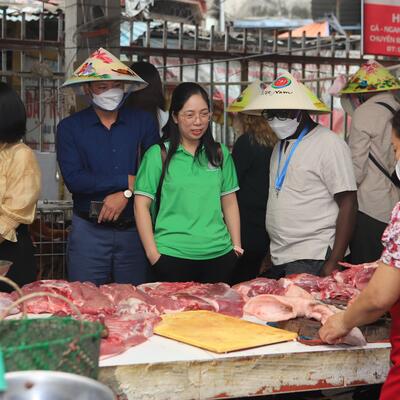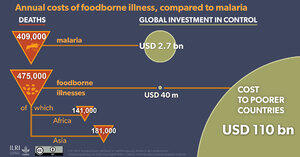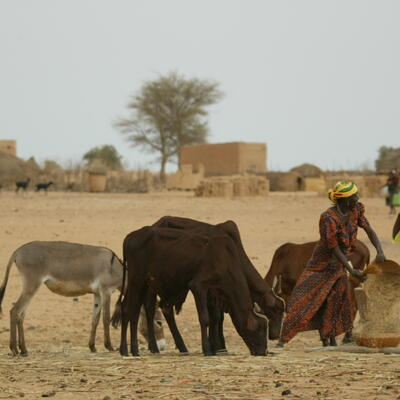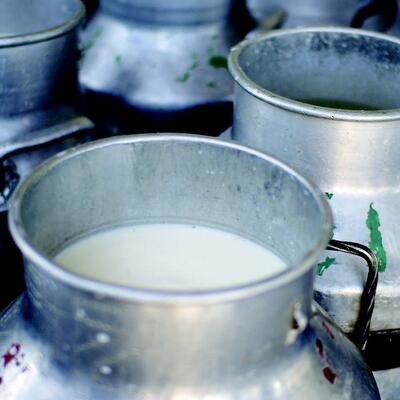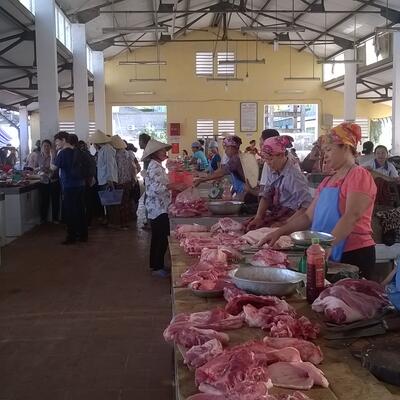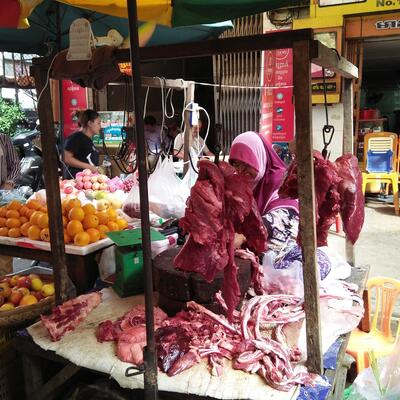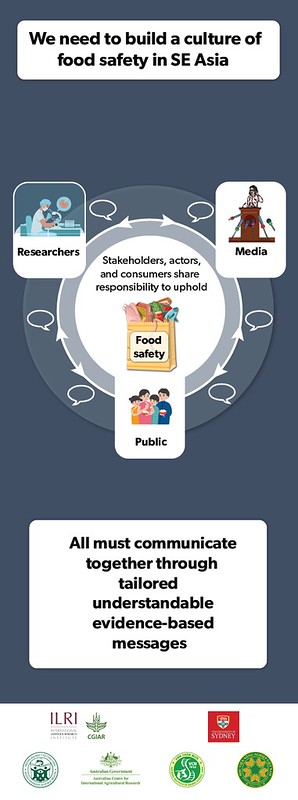

World Food Safety Day 2023
The International Livestock Research Institute (ILRI) joins the rest of the world to mark World Food Safety Day 2023 under the theme Food standards save lives. Celebrated on 7 June every year, World Food Safety Day aims to raise awareness on food safety and inspire action to help prevent and manage foodborne risks thereby contributing to human health, food and nutrition security, economic prosperity, market access, and sustainable development.
This year we highlight the launch of a new ILRI-commissioned report, New directions for tackling food safety risks in the informal sector of developing countries, by Spencer Henson, Steven Jaffee and Shuo Wang.
Despite ongoing structural changes, the food systems of most low- and lower middle-income countries are still dominated by small-scale processors, grocers, market vendors and food service operators. Unsafe food is a widespread issue in these informal food systems, with national public health implications.
Few countries have coherent strategies to effectively tackle food safety risks in the informal sector. Most of the policy attention and resources now devoted to domestic food safety in the developing world focus on strengthening centralized systems for ‘food control’.
The authors of the report argue that a different approach is needed to better tackle food safety risks in the informal sector. This would entail local action that is centrally guided, multisectoral action, rebalancing the use of sticks and carrots, and differentiating local strategies and priorities.
Webinar

Less sticks, more carrots: New directions for improving food safety in informal markets in low- and middle-income countries
Wednesday 7 June 2023
0900–1030 hours Eastern Daylight Time | 1300–1430 hours Greenwich Mean Time | 1600–1730 hours East Africa Time
Key messages
The magnitude of the global public health burden due to foodborne diseases is comparable to that of HIV/AIDS, malaria or tuberculosis, and most of this burden is in low- and middle-income countries. In 2015, the World Health Organization conservatively estimated that Africans suffer 137,000 deaths and 91 million acute illnesses annually from foodborne hazards, with the African region having the world's highest per capita incidence of foodborne illness.
The World Health Organization estimates that more than 600 million people fall ill and 475,000 die every year from eating food contaminated with bacteria, viruses, parasites, toxins or chemicals. According to the World Bank, unsafe food costs low-and middle-income economies alone about USD 95 billion in lost productivity annually. Unsafe food also limits trade.
Hazards are not the same as risks. The mere existence of pathogens in food is not necessarily an indication that consumers are at risk. In many parts of Africa, it is common knowledge that certain foods may contain hazards and common practice to neutralize them by thoroughly cooking or, with milk, through boiling. In Ethiopia, traditional fermentation of milk has been found to provide a 200-fold reduction in the risk of Staphylococcus poisoning. A focus on risks is therefore more effective at ensuring safer food.
Studies by ILRI and partners in Cambodia and Vietnam show that investing as little as USD 30 per shop on interventions to improve hygiene during food handling in slaughterhouses and markets, combined with training and light touch technologies, can significantly reduce microbial contamination of meat sold in traditional markets.
Safe food allows for the uptake of nutrients, promotes long-term human development and achievement of several of the Sustainable Development Goals. Food safety is a shared responsibility, involving the whole supply chain, from producers to consumers. In this context, most foodborne disease is preventable with proper food handling and education at all levels.
When food safety standards are applied, consumers will be protected by the efforts that have been undertaken in making sure that the food they consume is safer. Food safety standards provide the common basis for understanding and, at the same time, the common basis for joint action to ensure that all of us can benefit from safe food.
Implementing standards, guidelines and codes of practice along the food supply chain ensures that food is safe and nutritious when it reaches the consumer, contributing to consumer confidence in the products. Governments, producers, processors and retailers all play a part in ensuring food standards are met. The international food safety standards of the Codex Alimentarius facilitate fair practices in international trade.
If it is not safe, it is not food. Food security is achieved when all people, at all times, have physical and economic access to food that meets their dietary needs for an active and healthy life. In fact, food safety is a critical part of the utilization component of the four dimensions of food security – availability, access, utilization and stability.
Stories
Publications

Consumer demand for milk and the informal dairy sector amidst COVID-19 in Nairobi, Kenya
- Alonso, Silvia
- Angel, Moira Donahue
- Muunda, Emmanuel
- Kilonzi, Emily
- Palloni, Giordano
- Grace, Delia
- Leroy, Jef L.

Microbial contamination and antibiotic resistance in marketed food in Bangladesh: Current situation and possible improvements
- Samad, M.A.
- Eberson, L.
- Begum, R.
- Alam, M.G.S.
- Talukdar, F.
- Akter, R.
- Sinh Dang-Xuan
- Sharma, Garima
- Islam, S.
- Siddiky, N.A.
- Uddin, A.S.M.A.
- Mahmud, M.A.
- Sarker, M.S.
- Rahman, M.S.
- Grace, Delia
- Lindahl, Johanna F.
Projects

Improving handling practices and microbiological safety of milk and milk products in Borana pastoral communities, Ethiopia

Measuring and mitigating the risk of mycotoxins in maize and dairy products for poor consumers in Kenya
Experts working on food safety
Infographics
Article in Viet Nam News, 7 June 2023
On the occasion of World Food Safety Day, Viet Nam News reporter Khanh Duong spoke to Fred Unger, senior scientist and regional representative of the International Livestock Research Institute (ILRI) East and Southeast Asia, about ensuring food safety along the pork value chain from the farm to the dining table.
Read the article, Consumers can prevent foodborne diseases by simple at-home interventions, experts say in English and Vietnamese.







